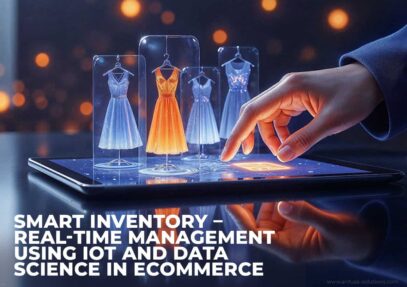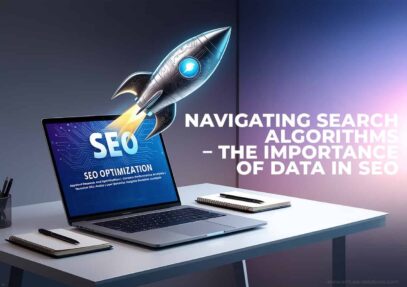
In the evolving landscape of digital transformation, few innovations have matched the disruptive potential of Large Language Models (LLMs). Once viewed as tools for content generation or conversational AI, LLMs have now emerged as productivity powerhouses, redefining how businesses operate, strategize, and scale.
As a business leader, productivity isn’t just about doing more. It’s about doing the right things faster, empowering teams, and streamlining decision-making. LLMs offer precisely that—a way to amplify human intelligence across the enterprise.
Here’s a practical look at how Large Language Models (LLMs) are unlocking productivity from the C-suite to the frontlines.
1. The New Knowledge Worker: Augmented, Not Replaced
The common narrative around AI often fuels fear of replacement. But business leaders are realizing that the true power of LLMs lies in augmentation.
Imagine a marketing manager instantly generating personalized email campaigns. Or a financial analyst summarizing hundreds of earnings reports in minutes. Or a product manager prototyping user stories based on customer reviews.
LLMs are transforming employees into supercharged professionals, reducing time spent on repetitive tasks and freeing them to focus on creativity, strategy, and innovation.
Key gains:
- Faster content creation
- Smarter data synthesis
- Reduced context switching
- Greater focus on high-value tasks
2. Cutting Through Information Overload
Modern organizations drown in data—emails, reports, meeting notes, customer feedback, market intelligence, and more. Sifting through this manually consumes hours.
LLMs act as intelligent information distillers, capable of:
- Summarizing documents, meetings, and research
- Highlighting insights from datasets
- Prioritizing action points
- Answering questions using company knowledge bases
This ability to instantly extract meaning from massive information flows is a game-changer for productivity and clarity.
3. Democratizing Expertise
Business productivity is often bottlenecked by access to expertise. With LLMs, every employee can tap into institutional knowledge and domain insights without needing to be an expert.
For instance:
- A junior sales rep can draft a proposal based on successful templates
- A new hire can understand company policies through a chat-based assistant
- A project manager can generate risk assessments with AI’s help
LLMs bridge the gap between experience and execution, enabling faster onboarding, quicker decision-making, and greater self-reliance.
4. Streamlining Customer Interactions
Customer experience is productivity’s silent partner. LLMs are raising the bar by empowering:
- AI-driven chatbots that resolve issues without escalation
- Email assistants that respond faster and in the right tone
- Sentiment analysis tools that inform proactive outreach
The result? Faster resolutions, happier customers, and less manual burden on your support teams.
5. Empowering Decision-Making
In a world of constant change, business leaders are expected to make fast, informed decisions. LLMs can assist by:
- Creating real-time summaries of market shifts
- Analyzing risks and opportunities
- Comparing competitive strategies
- Simulating business scenarios using past data
With these capabilities, leaders can move from reactive to proactive, turning insight into action in record time.
6. Embedding AI Into Business Workflows
LLMs deliver the most value when integrated into existing tools and workflows. Whether embedded in CRMs, project management platforms, or enterprise chat apps, LLMs can:
- Draft reports or presentations
- Auto-generate follow-up tasks from meeting transcripts
- Surface relevant documents and insights based on context
- Enable natural language querying of databases or dashboards
This level of integration transforms LLMs from “tools you go to” into partners that work alongside you, reducing friction and improving flow.
7. Fostering A Culture Of Innovation
Productivity isn’t just about output—it’s also about mindset. The introduction of LLMs inspires teams to:
- Rethink how work gets done
- Experiment with automation
- Embrace continuous learning
When employees are empowered with intelligent tools, they become more curious, creative, and collaborative, leading to cultural shifts that fuel long-term growth.
8. Leading With Responsible Adoption
With great power comes great responsibility. Business leaders must ensure that LLM use is:
- Ethical and inclusive
- Secure and privacy-conscious
- Transparent and explainable
Investing in AI governance, training, and clear usage guidelines ensures that productivity gains are not at the cost of trust, fairness, or compliance.
Conclusion
LLMs are not just another tech trend—they’re the new productivity engine for the enterprise. From knowledge access to decision-making and customer service to innovation, their impact is pervasive and powerful. As a business leader, your role is not to resist this change but to shape it. Equip your teams. Experiment with use cases. Build a culture that values smart work over hard work.
EnFuse Solutions stands at the forefront of this transformation, offering cutting-edge AI and LLM enablement services that help organizations harness the full potential of intelligent automation.

















Comment